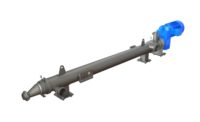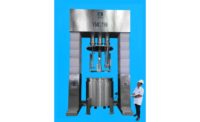
It’s a battlefield out there. The bakery production line roster is taking casualties every day, with operators moving on to other jobs, industries and careers. We have struggled to keep the trenches full of able-bodied troops that can do battle with the toughest of enemies. Those enemies are long hours, high-pressure work and hot environments. But, when it’s time to call in the special forces, where do we get them and where do we put them?
Back in the day, when a bakery management team would find itself needing an extra hand to fill a gap or cover a shift, there would be a call-in list filled with troops who were begging for extra duty, always for overtime. In return, these folks received experience in the process. If that same bakery had to reach outside of its own battalion, there was one, maybe two places they could go for temporary labor. That day’s temporary workforce comprised people who had been laid off at other factory jobs, could easily adapt to the bakery process and worked hard.
But in today’s world, it’s tough enough just to find people to fill all of the roles in a permanent manner, but easy to fill from outside of the fence line. Every city in America now has a multitude of temporary agencies to draw from. This new temporary workforce doesn’t seem to have a lot of experience with anything. So at this point, filling the trenches with personnel is doable, but how do we best determine how to utilize these inexperienced workers?
We tend to send these rookies out to the packaging room and dock. Why? Well, packaging is where we think there isn’t as much technical ability required as up in the mixing or oven rooms. We think that the key people in our operations need to be watching the dough mixer shake and ovens bake. The problem with this is that all of that good work that went on up front can go to waste quickly when we put inexperienced people in the positions where quality inspection and accounting are most of the responsibility and critical to the bottom line.
A rookie can be taught rather quickly how to put a basket on a line or even change bags on a machine, but teaching them the quality attributes of a variety of products in a short time, for a short time, just doesn’t work. A lot of waste accrues when we put temporary people in the wrong positions. Good product can get tossed and bad product can get sent out to the customer when we depend on temporary workers to handle such a critical set of tasks.
If we are faced with the use of temporary workers, and we decide that when we use them they need to be in packaging, how do we make the situation better? One word: Automation.
Everybody knows that the baking industry is becoming more and more automated. If a company is avoiding investment in automation for the packaging room, they could be adding risk to their business that doesn’t need to be there.
When we look at the production process from the end of the cooler conveyor to the dock door, the game can be won or lost with the focus, or lack of focus, we automate.
Product inspection is the first critical step in the packaging process. We have two main options for this today. First, we can place people in key areas to watch the product with their eyeballs and reject the bad ones all based on subjectivity, or we can add vision systems to the line that measure product dimensions and scan for product attributes like crust color and reject product based on objectivity.
Vision systems can not only measure and scan, they also can speak back to the ovens, proofers and bakers and provide clues about what is going on in real time, not to mention collect data for look-backs and future improvements. There’s no way that any human or a host of humans, permanent or temporary, can guarantee that the product going to the plastic bag meets specification like a vision system can.
The last critical step managed by the packaging room squad is the total counts. Bad counts of product, baskets, cases or pieces can throw off plant efficiencies and profit and loss in a big way when not handled correctly. Historically, this has been handled by humans as well. The best of employees, while trying as hard as they can, will still on occasion miss a stack, a pallet or even a full truckload. How do we make this situation better? One word: Automation.
There are a host of companies that can come in and automate case counting from the end of the packer to the truck, without fail. Bar codes, radio-frequency identification (RFID) chips and a number of creative things can be deployed in this area of the plant. Again, this takes the responsibility off of temporary workers who have been placed at the end of the line to handle your product.
Just like the special forces that defend our country, backed by smart technology, you need to back up your workforce with smart technology will help you win the small battles and the big war.



